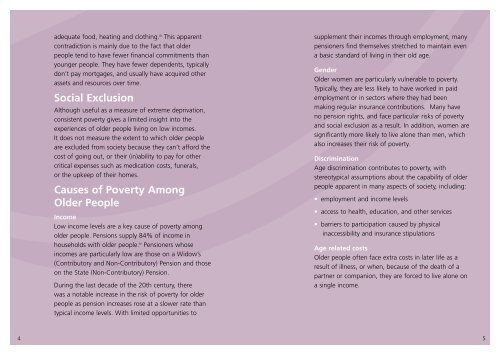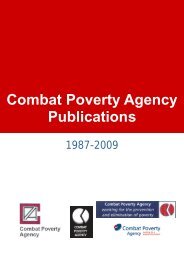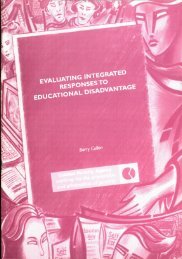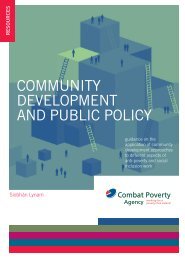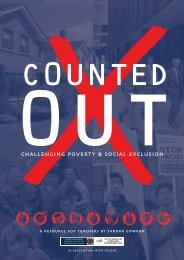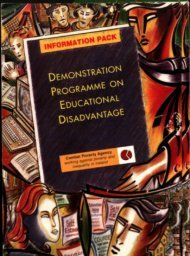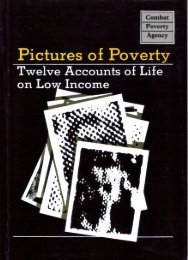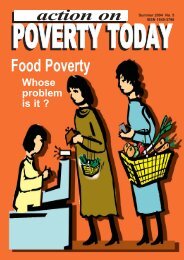Understanding Poverty - Combat Poverty Agency
Understanding Poverty - Combat Poverty Agency
Understanding Poverty - Combat Poverty Agency
You also want an ePaper? Increase the reach of your titles
YUMPU automatically turns print PDFs into web optimized ePapers that Google loves.
adequate food, heating and clothing. iii This apparentcontradiction is mainly due to the fact that olderpeople tend to have fewer financial commitments thanyounger people. They have fewer dependents, typicallydon’t pay mortgages, and usually have acquired otherassets and resources over time.Social ExclusionAlthough useful as a measure of extreme deprivation,consistent poverty gives a limited insight into theexperiences of older people living on low incomes.It does not measure the extent to which older peopleare excluded from society because they can’t afford thecost of going out, or their (in)ability to pay for othercritical expenses such as medication costs, funerals,or the upkeep of their homes.Causes of <strong>Poverty</strong> AmongOlder PeopleIncomeLow income levels are a key cause of poverty amongolder people. Pensions supply 84% of income inhouseholds with older people. iv Pensioners whoseincomes are particularly low are those on a Widow’s(Contributory and Non-Contributory) Pension and thoseon the State (Non-Contributory) Pension.During the last decade of the 20th century, therewas a notable increase in the risk of poverty for olderpeople as pension increases rose at a slower rate thantypical income levels. With limited opportunities tosupplement their incomes through employment, manypensioners find themselves stretched to maintain evena basic standard of living in their old age.GenderOlder women are particularly vulnerable to poverty.Typically, they are less likely to have worked in paidemployment or in sectors where they had beenmaking regular insurance contributions. Many haveno pension rights, and face particular risks of povertyand social exclusion as a result. In addition, women aresignificantly more likely to live alone than men, whichalso increases their risk of poverty.DiscriminationAge discrimination contributes to poverty, withstereotypical assumptions about the capability of olderpeople apparent in many aspects of society, including:• employment and income levels• access to health, education, and other services• barriers to participation caused by physicalinaccessibility and insurance stipulationsAge related costsOlder people often face extra costs in later life as aresult of illness, or when, because of the death of apartner or companion, they are forced to live alone ona single income.


